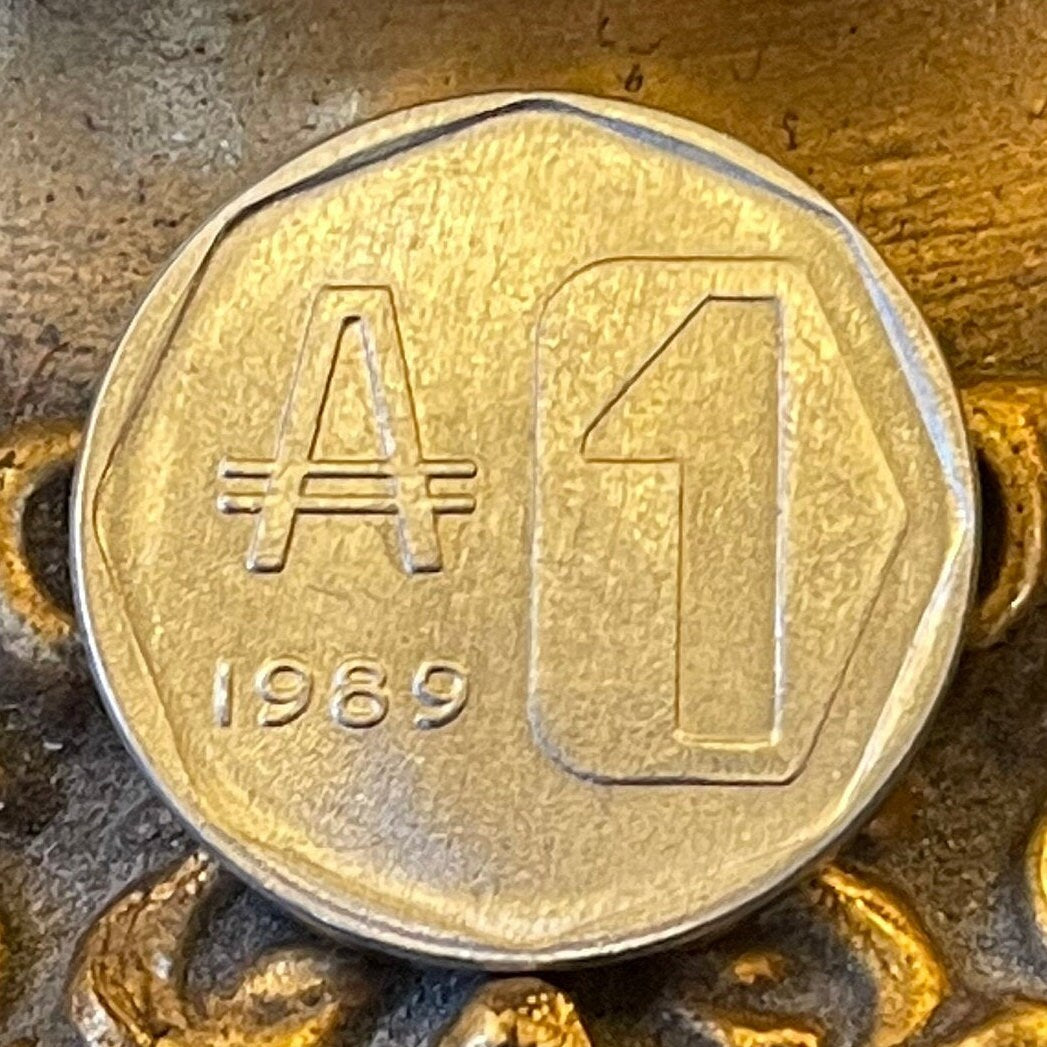elemintalshop
Buenos Aires City Hall 1 Austral Argentina Authentic Coin for Jewelry and Craft Making 1989
Buenos Aires City Hall 1 Austral Argentina Authentic Coin for Jewelry and Craft Making 1989
Couldn't load pickup availability
Buenos Aires City Hall 1 Austral Argentina Authentic Coin for Jewelry and Craft Making
Obverse: Old Buenos Aires City Hall
Lettering: REPUBLICA ARGENTINA,
CABILDO DE BUENOS AIRES
Reverse: Large value in box at right, double lined "A" at left top, date below "A"
Features
Issuer Argentina
Period Federal Republic (1861-date)
Type Standard circulation coin
Year 1989
Value 1 Austral (1 ARA)
Currency Austral (1985-1991)
Composition Aluminium
Weight 1.55 g
Diameter 20.2 mm
Thickness 2 mm
Shape Round
Orientation Coin alignment ↑↓
Demonetized 03-01-1992
Number N# 3264
References KM# 100, Schön# 100
Wikipedia:
Buenos Aires City Hall (Spanish: Palacio Municipal de la Ciudad de Buenos Aires; lit. "Municipal Palace") was, until 2015, the seat of the Office of the Chief of Government of Buenos Aires, the capital city of Argentina. From its construction in 1914 to the reformation of the city's constitution in 1996, the building was the seat of the City Municipality. It faces the Plaza de Mayo, across from the Casa Rosada presidential palace, in the barrio of Monserrat.
Since 2015, the Office of the Chief of Government has been located at a new building in the barrio of Parque Patricios. The City Hall still houses various government offices of the city government.
Building
The 1880 Federalization of Buenos Aires was followed by a boom in foreign trade and European immigration, and in 1890, Mayor Francisco P. Bollini commissioned the construction of a new city hall. The building would replace what had been the city government's offices since 1860 - the second floor of police headquarters; the city had grown dramatically since then, and the space had become inadequate.
Bollini's announced project had been immediately preceded by the Panic of 1890, however, and the effect of this crisis on the city's leading source of tax revenue British investment, led to plans of a relatively modest scale. Among the cost-saving measures was the city's enlistment of the Assistant Minister of Public Works, Juan Cagnoni, as chief architect, as well as the decision to build on the site of the outmoded police headquarters. Decorative tilework and chandeliers from the adjacent Zuberbühler house, which had recently been expropriated to make way for the Avenida de Mayo, were likewise salvaged for use in the upcoming city hall (where they remain to the present day).
The cornerstone laying ceremony was held on New Year's Eve 1890, for which the Mayor contributed a time capsule which included the construction permit among other mementoes. The works themselves cost the city a modest 150,000 pesos (US$75,000), and were completed in 1892. Inaugurated in March 1893, the new city hall originally housed 860 m² (9,200 ft²), and was only a little more spacious than the earlier offices. This problem was ultimately resolved by the 1911 acquisition of an adjacent residential lot, which allowed the expansion of the city hall to nearly double. Designed in the same Second Empire style with which Cagnoni designed the first part, the engineering firm of Bonneu Ibero, Parodi & Figini completed the annex in 1914. A connection to the adjacent House of Culture was opened following the latter's acquisition by the city in 1988.
Share










5 stars review from Hussain
great coin! fast service! no problems! thanks!









